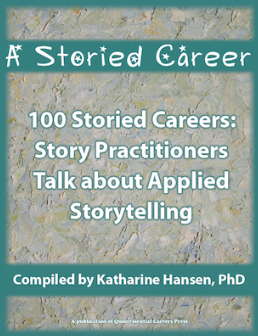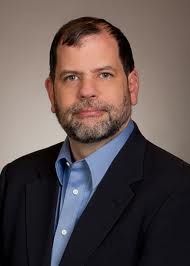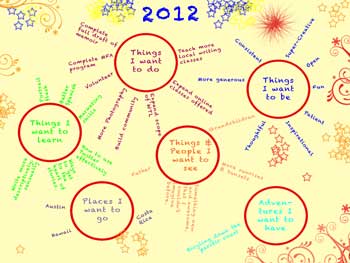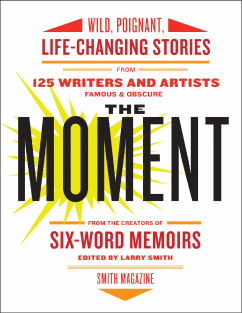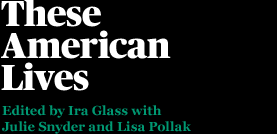Another blogger inspired me to create an A-Z list of highlights of story finds for the year. Strictly speaking, not all of these are finds. Some are my own creations or initiatives. Others are practitioners I’ve highlighted in the past who’ve been resurgent in the last year. Still others are simply tributes. But they represent some of the most notable content about applied storytelling from 2011.
A is for Assessments. Toward the end of this year, I got interested in the ways people can use story to discover their passions and career paths and made several discoveries of tools for doing so:
B is for Blair. As in practitioner Madelyn Blair (pictured), who revamped her Pelerei Web site this year with rich resources.
her Pelerei Web site this year with rich resources.
C is for Curation. 2011 has been huge for curation in the story world, and I’ve changed the way I curate. In late May, Gregg Morris’s Scoop.it curation, Story and Narrative inspired me to initiate two Scoop.it curations of my own, Organizational Storytelling (which is probably too narrow a name for it) and Personal Storytelling. Karen Deitz (see next entry) soon followed with her Just Story It curation. (Even though Gregg, Karen, and I cover similar territory, our content doesn’t overlap as much as you might think.) A search for Scoop.it curations related to story reveals 200 results.
I used to be frustrated by collecting far more material about applied storytelling than I could ever hope to cover here in this blog. Using the Scoop.it curations, I can still highlight noteworthy story content, but I don’t feel frustrated about not writing about all of it. Readership of my curations continues to grow, and I would like to think the curations and this blog (a curation of a different kind) complement each other.
Scoop.it is just one of several tools that I believe will continue to contribute to an evolution in content curation.
 D is for Deitz. As in practitioner Karen Deitz. Karen has long been a luminary in the story world, and I quoted her in my dissertation back in 2006, but this year, she transformed her Polaris Associates into a dynamic new, resource-rich site, Just Story It, in addition to the curation mentioned above. Here’s a post about her rebranding.
D is for Deitz. As in practitioner Karen Deitz. Karen has long been a luminary in the story world, and I quoted her in my dissertation back in 2006, but this year, she transformed her Polaris Associates into a dynamic new, resource-rich site, Just Story It, in addition to the curation mentioned above. Here’s a post about her rebranding.
E is for Earth. The Earth as storyteller was a true find. One of the stranger — but most fun — posts I wrote this year was The Earth Is the Original Nonlinear Storyteller, inspired by a geology field trip I went on in the fall. Adding to the fun was the response it got, including from one of my career-practitioner colleagues, as I wrote about here.
F is for free stuff. I have always been struck by the incredible generosity of the storytelling community. Most practitioners gave away amazing amounts of stuff for free. I don’t know of a good way to list all the free goodies I’ve reported on this year; a search on the word “free” yielded strange results. But you’ll find that most of the time when I report on a resource a practitioner is offering, it’s free.
G is for Goodbye. 2011 saw losses to the story world. We lost Steve Jobs. In an especially tragic way, we lost my friend, Trey Pennington. Not that we can equate the loss of a person with the loss of a story form, but in 2011, I wrote about the demise of serialized comic strips and romance comics and soap operas.
H is for Hoffman. Lou Hoffman consistently writes fascinating posts in his Ishmael’s Corner blog. This year, his infographic comparing corporate speak with storytelling went viral.
I is for Inside Pages. Many of my finds are hidden in the “inside pages” of this blog. Here, you’ll find a large collection of sites and blogs that relate to applied storytelling. My Bastille Day post provides a good example of the kind of links I’m referring to. In that post, I published a big list of links I was planning to add to my inside pages (Confession: I still haven’t added all of them.) To find my inside pages, look at this blog’s sidebar, and then scroll down to “Pages,” especially the links below the list of Q&A participants. I will publish a big new set of links soon.
J is for John’s Storied Resume. I cannot claim to be the least bit  unbiased, but I truly felt my son’s comic/zine resume was one of the most creative and storied resumes I’d ever seen. He’s working on revising it as he is currently seeking his fortune in Philadelphia.
unbiased, but I truly felt my son’s comic/zine resume was one of the most creative and storied resumes I’d ever seen. He’s working on revising it as he is currently seeking his fortune in Philadelphia.
K is for Kendall Haven’s story definition. I’ve explored the definition of story/storytelling almost since this blog’s inception and have gradually become more convinced of the importance of defining story. A pivotal moment in my thinking came when I read Kendall Haven’s definition of story in his Q&A:
A story is: a character-based narrative of an interesting character’s struggles to reach a real and important goal that is initially blocked by some combination of one or more problems and conflicts that have the potential to create some real risk and danger (jeopardy) for that character, all presented in sufficient detail to make the story seem vivid, compelling, and memorable.
L is for Life Writing. This blog has always featured content about life writing, personal storytelling, journaling, memoir and similar areas, but I feel I’ve emphasized these topics more this year than in the past, especially through my Personal Storytelling curation. This year, I’ve discovered life-writing gurus like Denis LeDoux. This year, columnist David Brooks conducted a neat project featuring stories by septuagenarians (The Life Report).
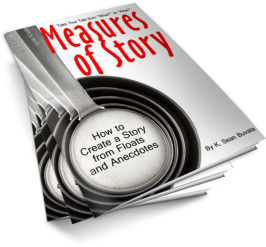 M is for Measures of Story. My friend, Sean Buvala came out with a new book this year, Measures of Story, which teaches readers “to create even more stories from the anecdotes and “floats” (the little brother of anecdotes) that are everywhere around you.”
M is for Measures of Story. My friend, Sean Buvala came out with a new book this year, Measures of Story, which teaches readers “to create even more stories from the anecdotes and “floats” (the little brother of anecdotes) that are everywhere around you.”
N is for No Story, No Fans. Another friend, another terrific contribution to the discipline. Read my review of Raf Stevens’s excellent book, No Story, No Fans.
O is for onethousandandone. The Australian story consultancy is  another example of resurgent practitioners. Principals Gabrielle Dolan and Yamini Naidu (pictured at right) came out with a free ebook, a terrific set of videos, and a coaching program in 2011.
another example of resurgent practitioners. Principals Gabrielle Dolan and Yamini Naidu (pictured at right) came out with a free ebook, a terrific set of videos, and a coaching program in 2011.
P is for Park. As in Park Howell, who is behind some of my very favorite resources of this year — his slideshow on How to Craft a Great 3-Minute Story and his Storyteller or Marketer slideshow, featured in the Q&A he did with me (I’m pretty sure the latter was created before 2011, but I discovered it this year).
Q is for Q&As. I had thought of 2011 as a rather fallow year for my Q&A series, but in review, it wasn’t too bad, at least the first half. Though more folks commit to these Q&As than follow through, these excellent Q&As graced these pages in 2011:
R is for Roots. As in, a return to my roots, or my special niche in applied storytelling, storytelling for job search and career. I believe I’ve posted more in that category in 2011 than I have in past years. Why? One reason is the proliferation of story curators. Sticking to my niche more often is a way for me to post what others aren’t posting. To get a flavor for these posts, click here (unfortunately, the way this blog is set up, you see only a limited number).
 S is for Storify. Storify has been one of the most buzzed-about and well-reviewed new tools in storytelling this year, especially for journalistic storytelling. With Storify, “users bring together the best text, photos and video from social media to tell stories that help make sense of the world.”
S is for Storify. Storify has been one of the most buzzed-about and well-reviewed new tools in storytelling this year, especially for journalistic storytelling. With Storify, “users bring together the best text, photos and video from social media to tell stories that help make sense of the world.”
T is for Toastmasters. 2011 was unquestionably the year I got a bit obsessed with Toastmasters. I told the story of my experience and explored the storytelling aspects of the organization’s approach. This post lists all my Toasties posts (including one from 2010).
U is for unbridled creativity. A topic that really caught my fancy this year was creativity and its connection to storytelling. Propelled by my own experimental summer of plying creativity in the form of crafts, I interviewed story luminary Annette Simmons about her creative pursuits. The second post contains a link to the first. Afterwards, I was blown away when I discovered an incredibly creative handout Annette created for job-seekers.
V is for Video, which continues to play a major role in the story world. Here are a few of my favorite posts that featured awesome video stories:
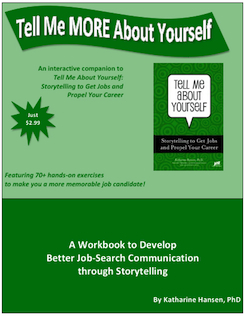 W is for Workbook. One of my biggest projects this year has been my workbook to accompany my book, Tell Me About Yourself: Storytelling to Get Jobs and Propel Your Career. I’m proud of it and curious whether buyers are finding it useful.
W is for Workbook. One of my biggest projects this year has been my workbook to accompany my book, Tell Me About Yourself: Storytelling to Get Jobs and Propel Your Career. I’m proud of it and curious whether buyers are finding it useful.
X is for eXcellent white papers. (Yeah, I know that’s a cheat for X). Ever-generous practitioners offered thought-provoking white papers, which I noted in these posts:
Y is for You. Every reader is a precious find. I cherish you above any content I’ve published this year. I value you and your story.
 Z is for Zahmoo. Created by Shawn Callahan and the folks at Anecdote, Zahmoo is a story bank for business and family stories and is another one of the exciting story tools launched this year. I wrote a preview post describing Zahmoo.
Z is for Zahmoo. Created by Shawn Callahan and the folks at Anecdote, Zahmoo is a story bank for business and family stories and is another one of the exciting story tools launched this year. I wrote a preview post describing Zahmoo.
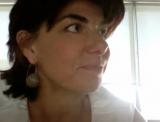 Bio: [from the Duo.ca Web site]: Nora Camps, president, of DUO.CA is a brand strategy consultant for charitable foundations, not for profit organizations and companies who have an entrepreneurial spirit. Nora’s personal interest is in executing agricultural theme marketing initiatives for a brighter future on a greener planet. Over time Nora has articulated, and indeed demonstrated the power of high fidelity storytelling, and how she uses print collateral and events to build an organization’s character.
Bio: [from the Duo.ca Web site]: Nora Camps, president, of DUO.CA is a brand strategy consultant for charitable foundations, not for profit organizations and companies who have an entrepreneurial spirit. Nora’s personal interest is in executing agricultural theme marketing initiatives for a brighter future on a greener planet. Over time Nora has articulated, and indeed demonstrated the power of high fidelity storytelling, and how she uses print collateral and events to build an organization’s character.deliverables — each one can build out a campaign or be used alone. We use something called ‘residual memory’ to program the stories to be memorable and easy to recall/retell. The way we use imagery, with words or on its own, is quite different from the convention. We have begun to deliver a story essay for Monforte Dairy each month, and we want to do that for others. We are talking to a foundation who can use all seven facets of High Fidelity Story Telling to launch and sustain a fundraising campaign for a significant sum … we can incorporate our storytelling method into social media campaigns … Can you tell that after 27 years in business, I am completely smitten with storytelling?


